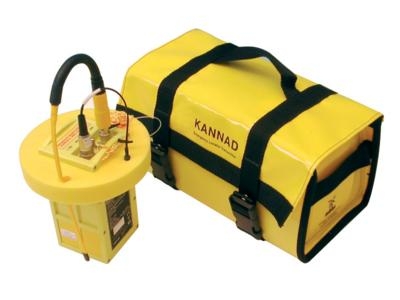Mon, Feb 02, 2015
Devices Help Pinpoint Positioning And Location Data
Southwest Airlines plans to deploy survival ELTs across its fleet of 737 aircraft. The Kannad Survival Emergency Locator Transmitters will be acquired from McMurdo Group, and will eventually be aboard all 636 of the carrier's airplanes.

ELTs, which are a key component of passenger and crew safety in the event of an emergency, enable first responders to locate the aircraft as soon as possible and potentially save more lives. Survival ELTs are removable from the aircraft and are stowed to facilitate usage by crew members in emergency situations. The ELTs were provided by McMurdo’s aviation partner, Aviall Services, Inc.
McMurdo’s Kannad ELTs are already used by some of the world’s largest aircraft and airline brands including Airbus, Boeing, Bombardier, Pilatus, British Airways, United Airlines and China Airlines. The high-performance distress beacons provide the most innovative technology available including pin-point positioning and location data for optimal rescue response time.
“For over 25 years, Kannad has provided aircraft manufacturers and airlines with high-performing and highly reliable search and rescue technologies providing redundant transmission and GPS,” said Jean-Yves Courtois, CEO of McMurdo Group. “We are proud to be the search and rescue ELT provider entrusted with providing critical, timely location identification of Southwest's aircraft in the event of an emergency.”
In a typical search and rescue scenario an emergency signal from an ELT or distress beacon is relayed via satellite to Mission Control Centers and Rescue Coordination Centers for eventual rescue team deployment. This search and rescue ecosystem (known as COSPAS-SARSAT) has helped to save over 37,000 lives since 1982. McMurdo is the industry’s only provider of this end-to-end search and rescue solution from aviation/maritime/military/personal distress beacons to satellite ground station communications to rescue response solutions.
(Image provided by McMurdo Group)
More News
Its Offerings Are Lighter, Cleaner, and Now Pushing Past 1,000nm on SAF Jet Fuel DeltaHawk’s diesel-powered aircraft lineup has seen incredible upgrades over the last few yea>[...]
The Airplane Experienced A Total Loss Of Engine Power On December 3, 2025, about 1600 central standard time, a Mooney Aircraft Corp. M20K, N57229, was substantially damaged when it>[...]
Make Sure You NEVER Miss A New Story From Aero-News Network Do you ever feel like you never see posts from a certain person or page on Facebook or Instagram? Here’s how you c>[...]
Aero Linx: European Society of Aerospace Medicine (ESAM) As a pan-European, independent forum, it works to promote the safety and health of all persons involved in aviation and spa>[...]
“We are excited to see Wisk achieve this milestone, and I’m so proud of the team that made it possible. The team at Wisk has built advanced technologies across flight c>[...]
 Aero-TV: DeltaHawks Diesel Power Steps Into the Spotlight
Aero-TV: DeltaHawks Diesel Power Steps Into the Spotlight NTSB Prelim: Mooney Aircraft Corp. M20K
NTSB Prelim: Mooney Aircraft Corp. M20K ANN FAQ: Turn On Post Notifications
ANN FAQ: Turn On Post Notifications ANN's Daily Aero-Linx (12.20.25)
ANN's Daily Aero-Linx (12.20.25) Aero-News: Quote of the Day (12.20.25)
Aero-News: Quote of the Day (12.20.25)



